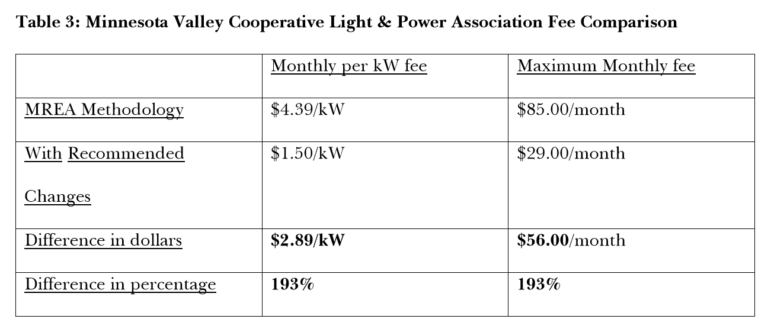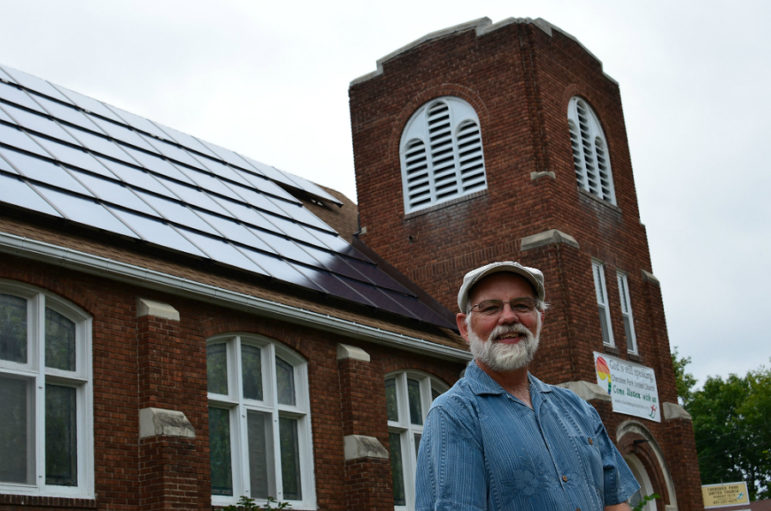For several years, rural Minnesota families and businesses have been dealing with uncertainty surrounding their solar and wind investments. Now, after years of discussion, the Public Utilities Commission is set to make a decision on fees charged by electric cooperatives by the end of 2017.
- This process began in 2015 when electric co-ops passed a new law that allows them to propose fees to be placed on customers who install solar and wind systems on their property if the fees are fair, reasonable and based on common principles for utility rates
- After fees as high as $85 a month were put in place last year, customers brought formal complaints to the Public Utilities Commission, leading the co-ops to go back and change the law again in 2017
- At question in this final review by the commission is whether the methodology used to calculate these monthly fees meets the requirements laid out in state statute
Though the case and the methodology under review is inherently complicated, it essentially boils down to whether the co-ops who implemented the fees are following three key requirements laid out in the current law:
- The charges must be based on a cost of service study made available to customers;
- The charges must be designed to recover “fixed costs not already paid for by the customer through the customer’s existing billing arrangement;” and
- The charges must be “reasonable and appropriate for that class of customer.”
What to look for
As part of our in-depth comments and analysis filed in the case, we walked through the methodology step by step to offer several critical problems for Public Utilities Commission to consider as they review each of the guidelines above.
First, it’s clear that the co-op fees being reviewed in this case were not based on an actual cost of service study – nor were those studies made available to customers. Instead, the fees were largely based on basic arithmetic that divides total revenue for a given utility by number of customers served by that utility in order to establish an average cost of service. This cost figure, apart from being wildly oversimplified, ignores any nuance that may exist between different customers (it can cost more to serve a brewery than a simple residential home, etc).
Second, there is no evidence in the record to suggest the fixed cost of serving these particular customers is not being paid for through other fees being paid already – namely, the fixed charge that all utility customers pay on their monthly bill no matter how much energy they use. For cooperative utilities, that monthly fixed charge can run well over $20 per month.
Lastly, that average cost figure implies that essentially all costs (and the revenue to pay for them) are inherently fixed – that no matter how much energy a customer uses, the cost to serve them are essentially the same. In other words, even if you are consuming your own energy on your own property the methodology used to create these fees assumes you are just as expensive as someone who consumes energy provided by the utility.
How to fix it
Even once those problems are addressed, you are left with a broken assumption – that simply calculating the costs of serving each customer is enough to determine the correct amount for each respective fee. But determining the accurate cost of serving a given customer is still only half of the equation. The solar or wind energy that the customer is selling back to the utility is, in and of itself, very valuable. Producing energy on site means not having to produce it and transmit it from somewhere else. At the very least it should have some quantified value. It certainly should be given a value higher than is currently given in the proposed methodology: zero.
Still, if you wanted to build a fee entirely based on costs and ignore all benefits, doing so accurately would look significantly different than the $85 a month fees being charged now. The table below compares the Minnesota Valley Co-op’s current fee of up to $85.00/month (“MREA Methodology”) with what its fee amount would be if it was based on the co-op’s actual costs and limited to “fixed” costs as required by law (“With Recommended Changes”). Keep in mind this comparison which lowers Minnesota Valley’s fee by almost 200% only corrects for the co-op’s dramatic overstating of costs – it does not account for any system benefits from customer-owned wind and solar.

Next steps
In the coming weeks the Public Utilities Commission will hear testimony from various stakeholders (families, farmers, businesses, independent experts like Fresh Energy, etc). The Commission will then make a final ruling on the fee methodology by the end of this year.
Because of changes made by during the 2017 legislative session, customer complaints against cooperative utilities will no longer be handled by independent review at the Public Utilities Commission. Instead, if customer are mistreated by their cooperative utility they will now be required to pursue conflict resolution as set up by that utility, followed by mediation and state court.

